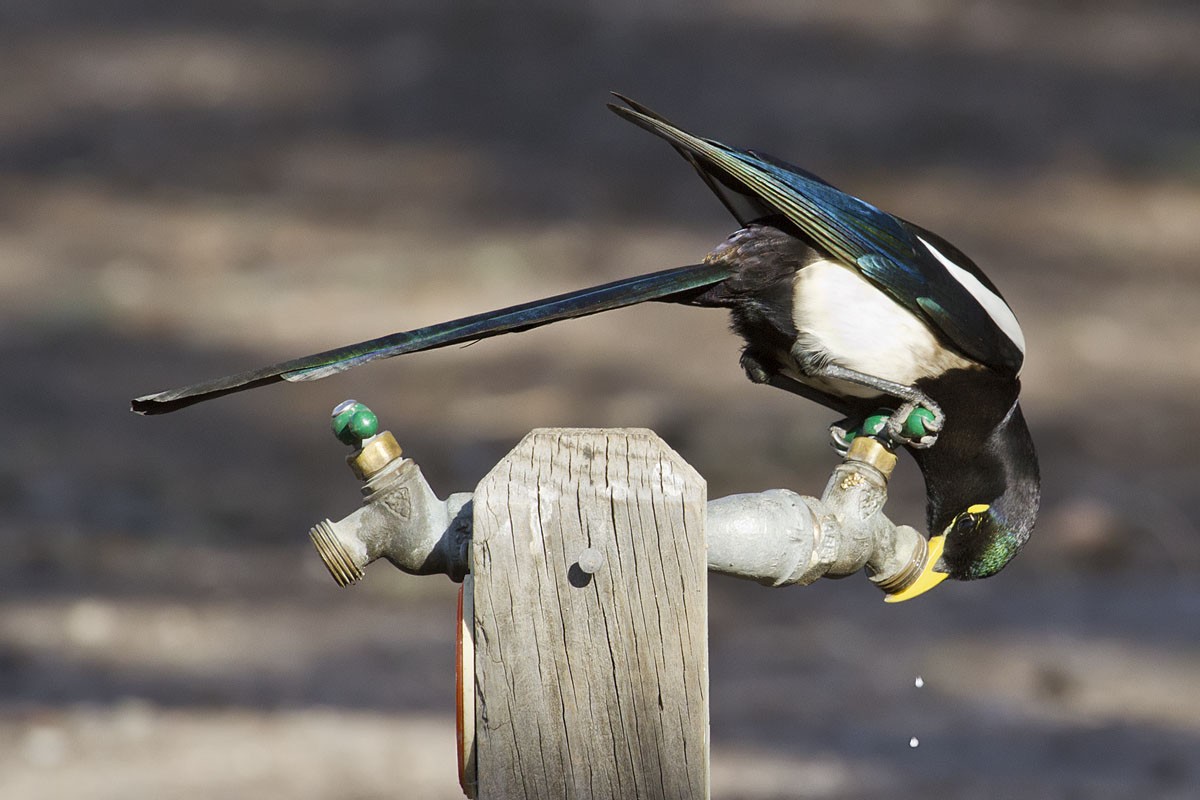Yellow-billed Magpie
A species of Magpies Scientific name : Pica nuttalli Genus : Magpies
Yellow-billed Magpie, A species of Magpies
Botanical name: Pica nuttalli
Genus: Magpies
Content
Description People often ask General Info
 Photo By Bill Bouton , used under CC-BY-SA-2.0 /Cropped and compressed from original
Photo By Bill Bouton , used under CC-BY-SA-2.0 /Cropped and compressed from original Description
The yellow-billed magpie (Pica nutalli) is a large bird in the crow family that is restricted to the U.S. state of California. It inhabits the Central Valley and the adjacent chaparral foothills and mountains. Apart from its having a yellow bill and a yellow streak around the eye, it is virtually identical to the black-billed magpie (Pica hudsonia) found in much of the rest of North America. The scientific name commemorates the English naturalist Thomas Nuttall. 
Size
42 cm
Colors
Black
White
Blue
Life Expectancy
2-6 years
Nest Placement
Tree
Clutch Size
4 - 7 eggs
Feeding Habits
Yellow-billed Magpie's omnivorous diet includes insects, carrion, acorns, and grain, with a preference for grasshoppers, moths, ants, and beetles. They forage on the ground and in trees, sometimes scavenging carrion or eating refuse. Yellow-billed Magpie caches excess food and is known to eat ticks off livestock.
Habitat
The yellow-billed Magpie inhabits central California's open oak woodlands, grassy oak savannas, and agricultural landscapes, generally at low altitudes. These birds require a year-round water supply and an abundance of insects. Their preferred habitats include mature valley and blue oak trees for nesting, with the species also found in riparian zones and lower foothill regions where vegetation like western sycamore, gray pine, and cottonwood thrives.
Nest Behavior
Both yellow-billed Magpie parents collaboratively build their nest over weeks, sometimes reusing the previous year’s structure.
Nest Characteristics
Yellow-billed Magpie's nest is set high, averaging 47 feet in large trees, often in a clump of mistletoe, creating a large structure nearly 3 feet across. The base is built with sticks, cemented with mud and dung, and lined with hair, grass, bark, and roots, topped with a stick canopy.
Dite type
Omnivorous
People often ask
General Info
Feeding Habits
Bird food type
Behavior
Yellow-billed Magpie exhibit monogamous pairing, though infrequent extra-pair couplings may occur. Courtship involves elaborate rituals with males showcasing plumage, vocalizing, and performing wing-quivers. They nest in loose colonies, safeguarding the pair-bond vigilantly against rival males. Both sexes contribute to nest building, with females primarily lining the nest. Post-egg-laying, males provision food to nest-bound females, and parental duties are shared. Bond maintenance is shown through bill-nibbling and mutual preening. Males perch prominently to deter competitors and predators. Post-nesting, yellow-billed Magpie form large flocks, foraging and roosting communally, including nonbreeding juveniles.
Species Status
The IUCN classifies the bird as a near threatened species. The Nature Conservancy places it in the vulnerable category. Besides West Nile Virus, threats include loss of habitat and rodent poison. The bird has a limited area of distribution but is widespread throughout the area and still common in many places. 
Scientific Classification
Phylum
Chordates Class
Birds Order
Perching birds Family
Crows and jays Genus
Magpies Species
Yellow-billed Magpie